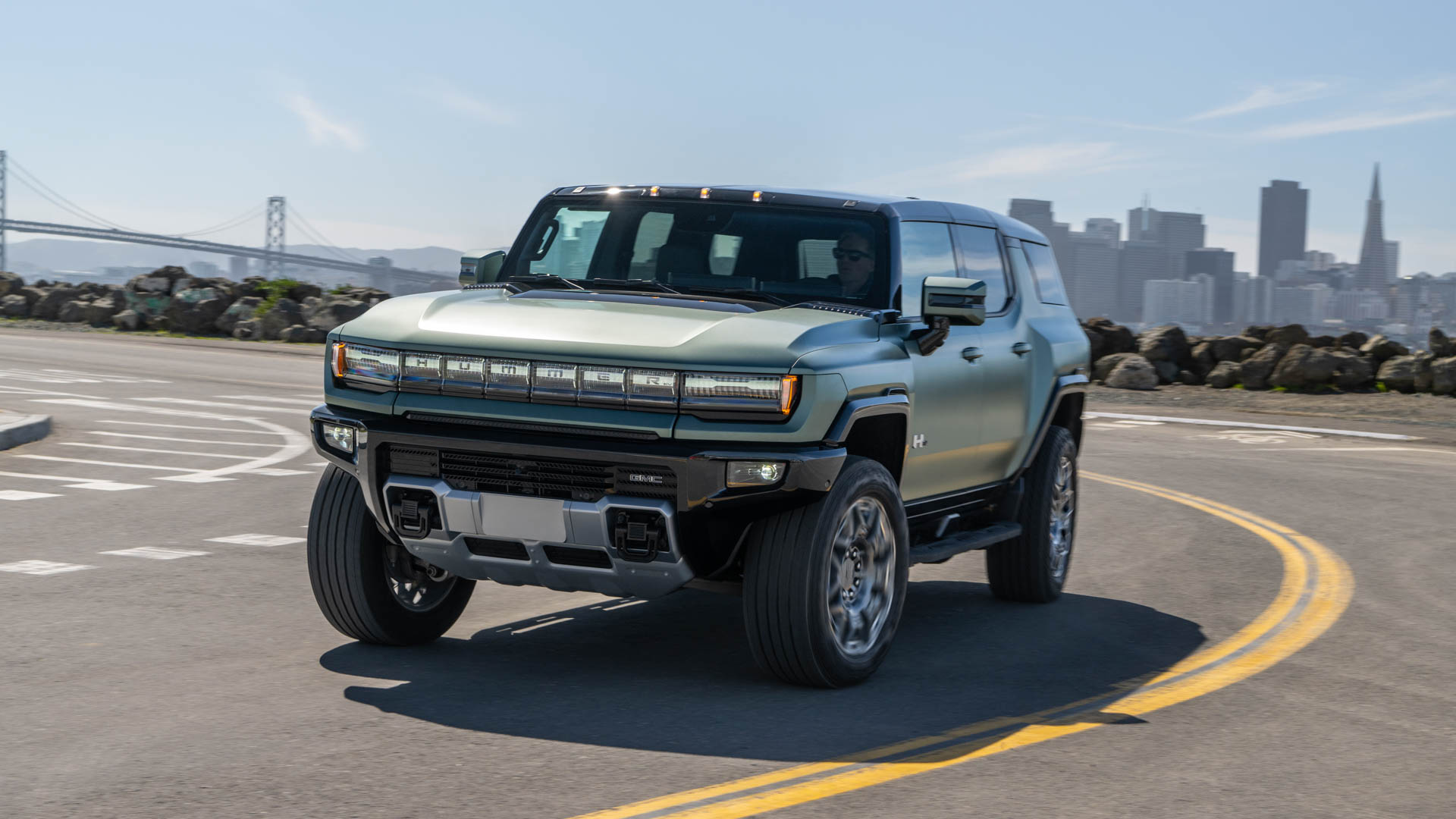

When I was a teenager and just learning about cars, the de facto example of poor fuel economy was the Hummer H2. The H2 was new at the time, and its 12-ish miles-per-gallon average was one of its main criticisms. Things haven’t changed much. Even the new electric GMC Hummer EV is incredibly thirsty—just for electrons, instead of hydrocarbons—with an official EPA-rated 53 mpge.
That 53 mpge figure is the same for both the Hummer EV SUV and SUT, the pickup version. It gets a bit worse with the optional mud-terrain tires, dropping to 50 mpge for both body styles.
For context, the Ford F-150 Lightning Extended Range is rated at 70 mpge and the Rivian R1S Dual Motor with its “Large” battery is rated for 68 mpge. The only electric vehicle with a worse rating is the Lordstown Endurance, which the EPA rates at 48 mpge.

Admittedly, mpge doesn’t always accurately represent the real-world range a car will get. Calculating mpge is complicated (here’s a great explainer), and involves comparing its energy consumption with the 33.7 kWh of energy density in a gallon of gasoline, while also factoring in battery losses from charging and running necessary electronics. It isn’t the only efficiency metric you should pay attention to, but it is useful.
Perhaps a more natural metric for comparing efficiency at least between EVs is miles-per-kilowatt hour. It’s a simple as dividing a vehicle’s maximum range by its battery capacity. The Hummer EV actually has an impressive EPA-rated range of 314 miles. However, it needs a massive 212-kWh (usable) battery pack to provide it. That means the Hummer EV only gets 1.48 miles per kWh. For comparison, the F-150 Lightning has a max battery size of 131 kWh and range of 300 miles, which translates to 2.29 miles per kWh. The large-pack variant of the Rivian R1S Dual Motor, with an EPA-rated 307-mile range and 135-kWh battery, gets 2.27 miles per kWh.

Why is the Hummer EV so inefficient? Mostly its weight, tipping the scales at 9,063 pounds. Nearly 3,000 of those pounds come from the battery pack alone. All that mass is tough for its three electric motors to move, which drags efficiency down.
This official EPA rating comes right around the same time that GMC increased the starting price of the Hummer EV SUT across the board, according to Autoblog. The base EV2X model now starts at $98,845 (a $1,600 increase), the EV3X is $106,945 ($700), and the EV3X Omega Edition is $150,295 ($300).
In defense of the Hummer EV, I don’t think many customers are interested in a six-figure SUV for its efficiency, regardless of its powertrain. However, when there are vehicles like the Rivian R1S, which provide similar performance and off-road capability with better efficiency, the Hummer just comes off looking especially thirsty. Some things never change.
Got tips? Send ’em to tips@thedrive.com